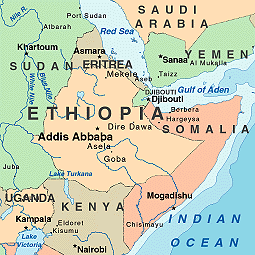
Every day I rely on a massive industrial system for my lifestyle, my convenience, and in many ways for my survival. By flicking on a switch or turning on my computer I set into motion a giant fossil fuel burning behemoth, comprised of thousands of miles of wire, and a whole series of components that would boggle the mind if it were not so common place. I use electricity from the national grid.
This puts me in a club with most everyone in the developed world. We simply could not get by without out centrally provided electricity. Have 24 hour a day electricity allows us to have hospitals and all of the life saving equipment inside, it allows me this computer, it allows me safety, security, warmth, light, and a bevy of less important but enjoyable things.
These and many other reasons are why Ethiopia wants to provide that same security to its people.
Ethiopia, whose population is expected to swell from 75 million to more than 100 million by 2015, plans to light up the entire country in the next eight years, the head of the Electric Power Corporation (EEPCO) said on Wednesday.
Across Africa costly blackouts, strained power supplies and patchy electrification frequently plunge the world’s poorest continent into darkness, stifling much-needed development.
(via)
At first blush it seems like a great idea, with electrification comes all the wonderful things I get to enjoy every day. There is however a darker side to all this, if Ethiopia begins burning large amounts of fossil fuels to create its power this will lead to more green house gasses, as more and more of the nations of the world that currently do not have wide spread electrification do the same the problems of global warming will grow worse and worse. India, China, and many other places have the potential to pump out horrific amounts of C02.
Continue reading The Promise And Pitfalls Of Third World Electrification